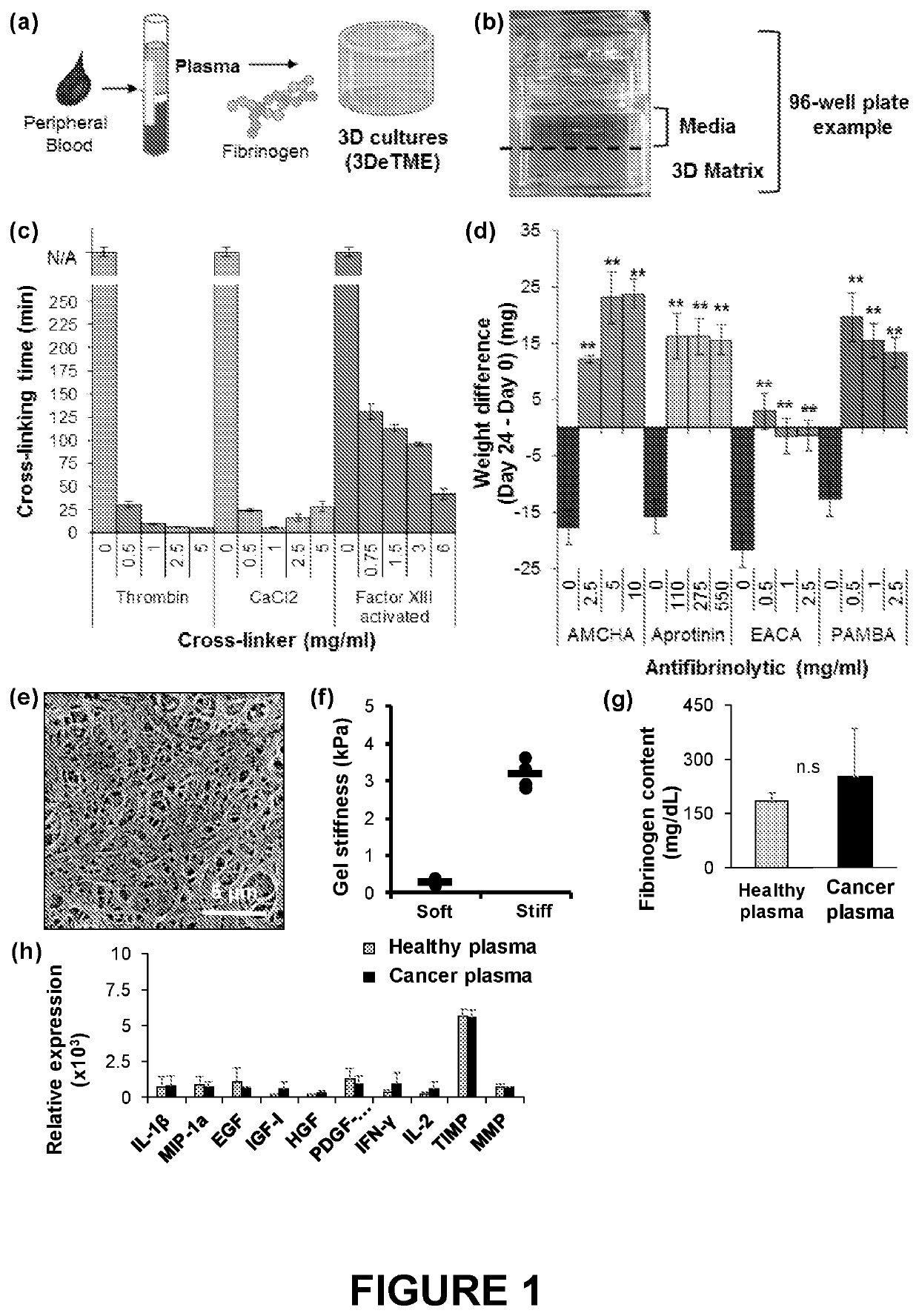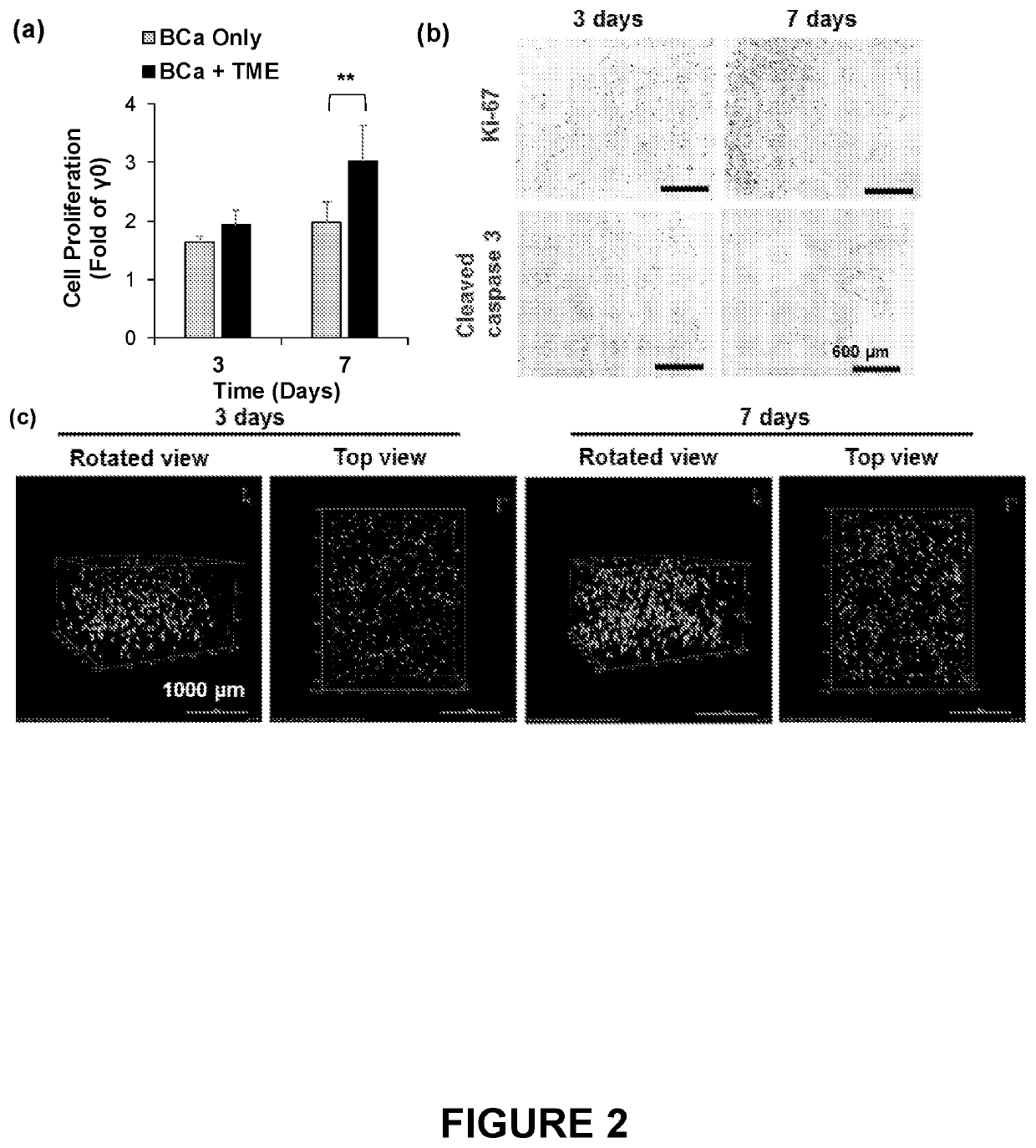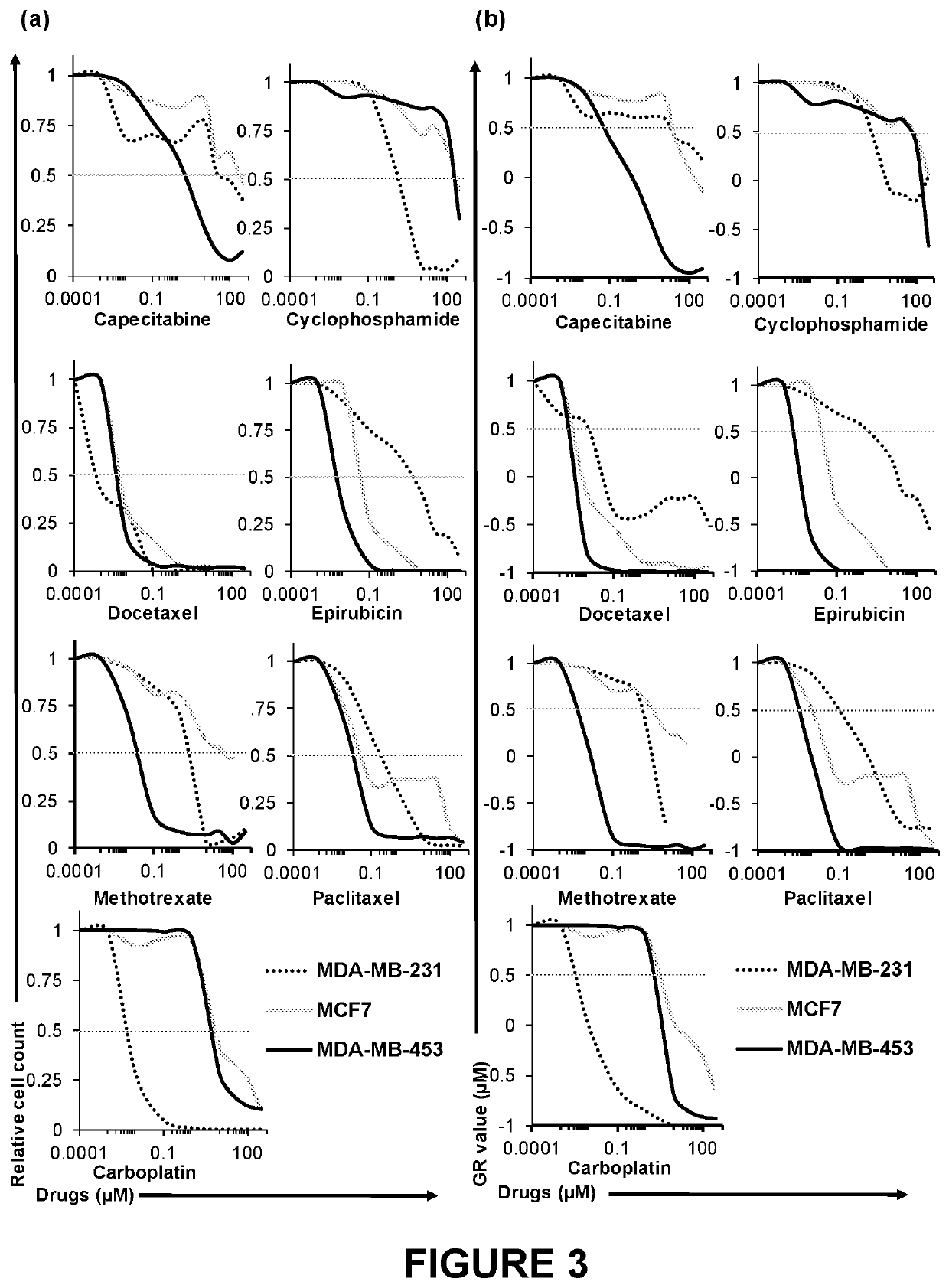Three-Dimensional Cross-Linked Scaffolds Of Peripheral Blood Plasma And Their Use
a scaffold and peripheral blood plasma technology, applied in the field of three-dimensional cross-linked scaffolds of peripheral blood plasma and their use, can solve the problems of very low reproducibility and translatability to human clinical trials
- Summary
- Abstract
- Description
- Claims
- Application Information
AI Technical Summary
Benefits of technology
Problems solved by technology
Method used
Image
Examples
examples
Chemical and Physical Characterization of Human Plasma 3D Culture Model:
[0060]Methods: 3DeTME cultures are formed through the cross-linking of fibrinogen found naturally in plasma. Cross-linking time was assessed by measuring the time necessary to achieve matrix cross-linking using three relevant cross-linkers of the blood coagulation process including Thrombin (0-5 mg / ml), CaCl2 (0-5 mg / ml), and Factor XIII (0-6 mg / ml). The stabilization effects of preventing fibrin degradation and stability improvement in the scaffold was assessed by surveying several chemical antifibrinolytic agents including tranexamic acid (AMCHA) (0-10 mg / ml), Aprotinin (0-550 mg / ml), epsilon-aminocaproic acid (EACA) (0-2.5 mg / ml), and 4-aminomethylbenzoic acid (PAMBA) (0-2.5 mg / ml). The stability of the scaffold was studied by measuring each scaffold weight at day 0 and again measuring scaffold weight at the conclusion of a 3 week time period. 3DeTME culture scaffold structure and morphology was analyzed with...
PUM
| Property | Measurement | Unit |
|---|---|---|
| concentration | aaaaa | aaaaa |
| concentration | aaaaa | aaaaa |
| concentration | aaaaa | aaaaa |
Abstract
Description
Claims
Application Information
 Login to View More
Login to View More - R&D
- Intellectual Property
- Life Sciences
- Materials
- Tech Scout
- Unparalleled Data Quality
- Higher Quality Content
- 60% Fewer Hallucinations
Browse by: Latest US Patents, China's latest patents, Technical Efficacy Thesaurus, Application Domain, Technology Topic, Popular Technical Reports.
© 2025 PatSnap. All rights reserved.Legal|Privacy policy|Modern Slavery Act Transparency Statement|Sitemap|About US| Contact US: help@patsnap.com



